Keynote and plenary talks from renowned speakers
The program will include invited plenary lectures, contributed talks and poster sessions highlighting the latest research and technologies in the field.
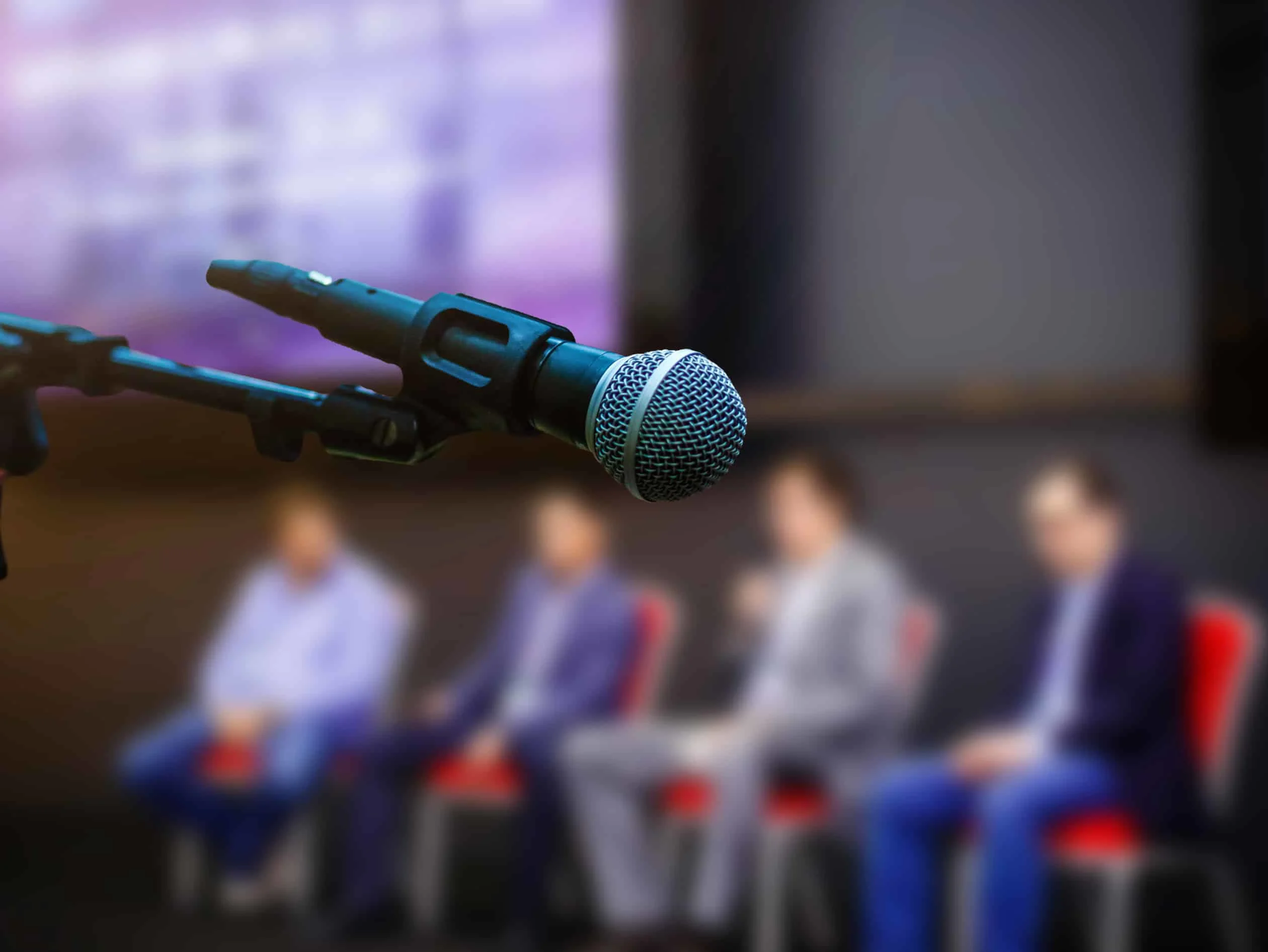
Infelizmente, não oferecemos suporte total ao seu navegador. Se for possível, atualize para uma versão mais recente ou use o Mozilla Firefox, o Microsoft Edge, o Google Chrome ou o Safari 14 ou mais recente. Se não conseguir e precisar de suporte, envie seu feedback.
Gostaríamos de receber seu feedback sobre essa nova experiência.Diga-nos sua opinião abre em uma nova guia/janela

Building upon the successes of its predecessors, the 8th edition of the International Conference on Bio-sending Technology will continue to serve as a premier platform for leaders from industry and academia to convene, exchange knowledge, and foster collaborations in the dynamic field of bio-sensing technology.
Sign up for conference news abre em uma nova guia/janela
Join the conversation #BITE2024conf abre em uma nova guia/janela
The 8th International Conference on Bio-sending Technology will provide an unparalleled platform for participants to access the latest developments in bio-sensing technology. Attendees can expect a diverse range of sessions and presentations that cover advancements in novel biomarkers, binding technologies, applications of new materials, integration of new transducers and instrumentation, and data analysis and interpretation. With this in mind, the 8th International Conference on Bio-Sensing Technology embraces five key themes that encompass a diverse array of topics, ensuring comprehensive coverage of the multidisciplinary nature of bio-sensing technology.
Recent global events have underscored the pivotal role of bio-sensing technologies in shaping political decisions, facilitating scientific breakthroughs, and instilling public confidence. Notably, the significance of biomarkers in various domains, including virus and antibody testing critical for controlling the spread of infectious diseases like COVID-19, has come to the forefront. The ever-growing demand for faster, more sensitive, and reliable testing methodologies, as evidenced by numerous COVID-19-related funding calls, highlights the need for advancements in biomarker-based detection technologies. This demand extends beyond coronavirus detection and encompasses diverse applications of bio-sensing technology in healthcare, agri-food, environment, and security.
Researchers across multiple disciplines are working to enhance bio-sensing technologies by developing new binding technologies, leveraging advanced materials, integrating state-of-the-art transducers and instrumentation, and exploring innovative approaches to biomarker analysis. Additionally, the secure transmission, interpretation, and analysis of the data generated by bio-sensing technologies remain crucial factors for successful implementation. Furthermore, seamless connectivity with the broader world continues to be a driving force for advancing bio-sensing technologies.
Conference attendees will have the opportunity to immerse themselves in the city's enchanting atmosphere, exploring iconic landmarks such as the Alcázar of Seville and the Cathedral of Seville, which is the largest Gothic cathedral in the world.
Following the success of the first 7 conferences, the 8th International Conference on Bio-Sensing Technology will continue to bring together leaders from industry and academia to exchange and share their experiences, present research results, explore collaborations and to spark new ideas, with the aim of developing new projects and exploiting new technology for bio-sensing applications.
Poster abstracts are invited on the following topics and should be submitted using the online abstract submission system abre em uma nova guia/janela.
The major areas of research, innovation and commercialisation in bio-sensing technology are reflected in the 5 themes of the conference. The scope and area of the invited talks in each theme is given below:
Application of novel molecules in bio-sensing technology
Interaction of biological molecules in biosensor measurements
Focus on novelty of biomarkers or bio-capture/receptor molecules
Emphasis on biomarker application, such as rapid diagnostics
This broad theme seeks to showcase research that investigates the application of novel molecules in bio-sensing technology. It encompasses the exploration of the interaction of biological molecules, which represents the initial step in a biosensor measurement, whether it involves a novel target in a sample matrix or a novel bio-capture/receptor molecule. The primary focus of this theme lies in highlighting the novelty of the biomarker or bioreceptor itself, rather than the detection technology used.
Researchers are encouraged to present their latest findings that demonstrate the application of new biomarkers in bio-sensing technology. Preference will be given to research that applies these novel biomarkers to specific bio-sensing technology applications. For instance, researchers may focus on the utilization of new disease markers in the development of rapid diagnostic tools. By showcasing such innovative applications, the theme aims to emphasize the potential impact of these novel biomarkers in advancing bio-sensing technologies and their diverse applications.
The presentations and discussions within this theme will delve into the unique characteristics, properties, and applications of these newly discovered biomarkers or bioreceptors. Researchers will have the opportunity to showcase their efforts in identifying, validating, and exploiting these molecules for various purposes, including disease diagnosis, prognosis, treatment monitoring, and beyond. The theme provides a platform for researchers to share their novel approaches, methodologies, and experimental results in utilizing these biomarkers, ultimately contributing to the advancement of bio-sensing technology.
Sensor surface research and development
Immobilization, stabilization, and interactions of biological molecules
Integration of nanomaterials on sensor surfaces
Integration of biological molecules with novel materials at micro and nano scales
All biosensors rely on detecting biological interactions on a surface. This theme offers a unique opportunity to showcase research that specifically focuses on the sensor surface, delving into the intricate details of immobilization, stabilization, and interactions of biological molecules. Understanding and optimizing these aspects are crucial for the development of highly sensitive and reliable biosensor platforms.
Researchers are encouraged to present their latest findings related to the sensor surface, shedding light on innovative approaches and techniques employed to enhance the performance of biosensors. The theme encompasses research that explores the integration of nanomaterials onto the sensor surface, leveraging their unique properties to augment biosensor capabilities. These nanomaterials may include various types such as nanoparticles, nanowires, and nanofilms. The integration of cell surface proteins, nucleic acids, and other biological molecules with novel materials at the micron and nano-scales represents an exciting area of exploration within this theme. Furthermore, the integration of nanomaterials will be a prominent focus, exploring their role in enhancing the sensitivity, selectivity, and overall performance of biosensors.
The presentations and discussions within this theme will address key challenges and opportunities associated with sensor surface modifications, bio-functionalization strategies, and the utilization of nanomaterials. Researchers will explore the potential of innovative materials, surface chemistries, and fabrication techniques to optimize the binding capabilities of biosensors. The theme seeks to foster collaborations and knowledge exchange to advance the field's understanding of surface interactions and enhance the design and development of biosensors with superior performance.
New and emerging detection technologies for biosensors
Optical, electrochemical, piezoelectric, and magnetic measurements
Advances in sensor fabrication and integration of micro and nano technologies
The emphasis in this theme will be on showcasing research that focuses on new and emerging detection technologies used to develop novel biosensors and biosensing applications. The theme encompasses a wide range of transduction technologies that enable the conversion of biological interactions into measurable signals, including optical, electrochemical, piezoelectric, and magnetic measurements. It also includes the exploration of novel sensors for bio-imaging, providing exciting opportunities for advancing imaging capabilities in biosensing. Researchers are encouraged to present their latest findings and breakthroughs in the development and application of new detection technologies. This theme highlights the innovative approaches and techniques employed to generate signals in biosensors, ultimately leading to improved sensitivity, selectivity, and dynamic range. The focus of this theme is on the signal generation itself, rather than the specific biomarker or application. Presentations and discussions within this theme will cover a diverse range of topics, including advancements in optical detection techniques such as fluorescence, surface plasmon resonance, and Raman spectroscopy. Electrochemical methods like amperometry, potentiometry, and impedance spectroscopy will also be explored. Additionally, piezoelectric and magnetic measurements, along with other emerging detection technologies, will be showcased .The presentations and discussions will explore the principles, methodologies, and experimental results associated with these novel detection technologies and fabrication techniques. Attendees will gain insights into the challenges and opportunities in signal generation, transduction efficiency, and integration of transducers with biosensor platforms. The theme seeks to foster collaborations and knowledge exchange to advance the understanding of cutting-edge detection technologies and their application in bio-sensing.
Understanding interactions and measuring signals in bio-sensing applications
Mathematical models and visual representations for signal analysis
Signal and image processing, data analysis, and communication technologies
This theme delves into the challenges associated with understanding the complex interactions taking place in a bio-sensing application and the measurement of the signal generated by the device. It encompasses the exploration of models, whether through mathematical analysis or visual representation, that elucidate the processes leading to a measurable response from the instrumentation used in a bio-sensing application. The primary focus of this theme is to enhance the understanding and measurement of the signals generated by bio-sensing technology. Researchers within this theme will present their findings related to the analysis and interpretation of data obtained from bio-sensing applications. They will explore mathematical models, statistical approaches, and visualization techniques that shed light on the underlying mechanisms of biological interactions and the generation of measurable signals. These models aim to provide insights into the complex dynamics and optimize the performance of bio-sensing devices. Furthermore, the theme emphasizes the importance of robust signal and image processing methodologies to enhance the accuracy, reliability, and speed of data analysis in bio-sensing technology. The secure transmission of data, ensuring privacy and confidentiality, is also a significant aspect covered within this theme. Presentations and discussions within this theme will focus on advancements in data analysis techniques, including machine learning, pattern recognition, and artificial intelligence algorithms. Researchers will share their experiences in extracting meaningful information from complex datasets generated by bio-sensing devices. They will also explore novel approaches for signal processing, noise reduction, and feature extraction to enhance the performance of bio-sensing technology.
Reports of field or clinical trials
Technologies in the process of being commercialized
Applications in sectors such as agri-tech, health, security, and food quality/safety
Bridging the gap between research and practical implementation
Economic and societal impact of successful commercialization
This theme shines a spotlight on research and technologies that have been successfully employed in real-world settings. It encompasses the presentation and discussion of field or clinical and field trials, as well as technologies that are in the process of being commercialized. The focus of this theme is to showcase practical applications of bio-sensing technology across diverse sectors, including agri-tech, health applications, security, and food quality/safety applications. Researchers within this theme will share their experiences and findings from trials conducted in real-world scenarios. This may involve the evaluation of bio-sensing technologies in agricultural settings to improve crop yield, optimize resource management, or monitor environmental conditions. In the realm of health applications, researchers may present the outcomes of clinical trials that demonstrate the efficacy and reliability of bio-sensing devices for disease diagnosis, patient monitoring, or personalized medicine. The theme also encompasses the exploration of bio-sensing technologies used in security applications, such as threat detection and surveillance. Additionally, advancements in food quality and safety applications, including the monitoring of contaminants or authentication of food products, will be highlighted. Researchers and industry professionals will present their innovative solutions that have transitioned from the laboratory to the market. This may include the development of biosensor-based products, devices, or services with the potential for widespread adoption and impact. The commercialization aspect of this theme aims to bridge the gap between research and practical implementation, fostering collaborations and knowledge exchange between academia and industry. By showcasing research and technologies employed in real-world settings, the conference aims to highlight the practical applications and commercialization potential of bio-sensing technology. The theme encourages collaborations and knowledge exchange between researchers, industry professionals, and policymakers, fostering an environment conducive to translating research outcomes into tangible solutions. Ultimately, advancements in real-world applications and commercialization will contribute to the broader goal of harnessing the full potential of bio-sensing technology across multiple sectors, benefiting society at large.
Abstract submission deadline extended to: 15 December 2023 Author notification deadline: 7 February 2024 Author registration deadline: 1 March 2024.
The program will include invited plenary lectures, contributed talks and poster sessions highlighting the latest research and technologies in the field.


Choose from a variety of sponsorship and commercial options to raise your profile and position your company as a thought leader in the community.

You are cordially invited to submit manuscripts based on your 8th International Conference on Bio-Sensing Technology for possible publication in Sensing and Biosensing Research (SBSR), Biosensors & Bioelectronics (BIOS), Biosensors & Bioelectronics X (BIOSX) or Sensors and Actuators Reports (SNR) with the intention of publishing in a Virtual Special Issue (VSI) that is dedicated to BITE 2024 conference. Biosensors & Bioelectronics X is an international, peer-reviewed gold open access journal focusing on all aspects of Biosensors and Bioelectronic. Elsevier will waive all relevant publication fees if Participants of BITE 2024 conference choose to publish on the Gold OA journal BIOSX.
Sensing and Biosensing Research is an international, peer reviewed gold open access journal with IF 5.3; Sensors and Actuators Research is also an international, peer reviewed gold open access journal with IF 5.9.
A Virtual Special Issue rules out delays in publication for contributors to the special issue and will make this conference special issue more complete and accessible than it has ever been. Please see below its advantageous characteristics:
Accepted papers are published individually as soon as they are accepted in regular journal volumes on Science Direct;
Footnotes will be included in each accepted paper, indicating at which conference it was presented;
Virtual Special Issue is prepared and hosted on Journal homepage site – with links to papers at Science Direct, retaining all original citation details;
Preface and with the added possibility of preface, photos, conference award(s) if any, will be available via the Virtual Special Issue.
Authors are suggested reading Scopes of these journals carefully before deciding to contribute to which journals.
Submission links:
SBSR: https://www.editorialmanager.com/sbsr/default1.aspx abre em uma nova guia/janela
BIOSX: https://www.editorialmanager.com/biosx/default1.aspx abre em uma nova guia/janela
BIOS: https://www.editorialmanager.com/biosbe/default1.aspx abre em uma nova guia/janela
SNR: https://www.editorialmanager.com/snr/default1.aspx abre em uma nova guia/janela
Enter your user name and password (first time users will have to register);
Please select article type name “VSI: BITE 2024” during submission process;
Follow the step-by-step instructions to submit your paper.
Submission deadline: October 31 st 2024
When preparing your manuscript(s), please carefully follow the Guide to Authors of your selected journal, which you can find at journal’s homepage site.
In the cover letter please mention that your manuscript is intended for the BITE 2024 Special Issue.
All manuscripts will be subjected to the regular selection process for the journal selected, including the strict peer review procedure; therefore acceptance for presentation at the meeting is not a guarantee for publication in the journals.
We also have the Special issue: BITE 2024_Rising Stars for the journal Sensing and Bio-sensing Research. Submission link coming soon!
Thank you in advance for your contribution!
Biosensors & Bioelectronics abre em uma nova guia/janela is the principal international journal devoted to research, design, development and application of biosensors and bioelectronics. It is an interdisciplinary journal serving professionals with an interest in the exploitation of biological materials and designs in novel diagnostic and electronic devices including sensors, DNA chips, electronic noses, lab-on-a-chip and μ-TAS.
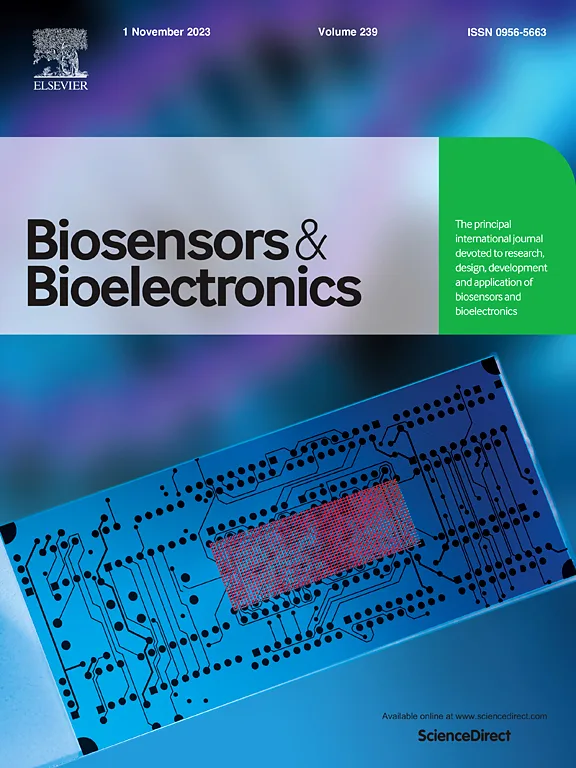
Biosensors and Bioelectronics: X abre em uma nova guia/janela is the open access mirror journal of Biosensors and Bioelectronics.
Biosensors and Bioelectronics: X offers authors with high-quality research who want to publish in a gold open access journal the opportunity to make their work immediately, permanently, and freely accessible.
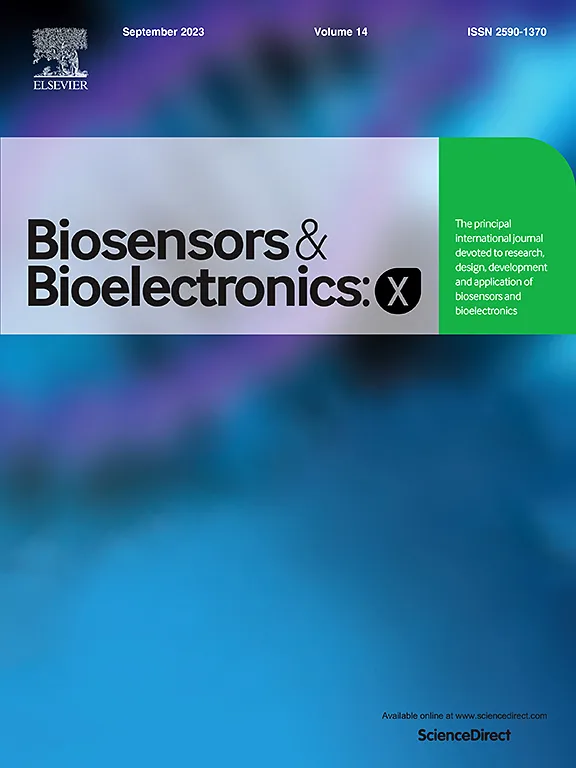
Sensing and Bio-Sensing Research abre em uma nova guia/janelais an open access journal devoted to research, design development and application of all bio-sensing and sensing technologies. The editors will accept reviews and papers of obvious relevance, which describe important new concepts, underpin understanding of the above areas of interest or provide important insights into the practical application, manufacture and commercialisation of bio-sensing and sensing technologies.
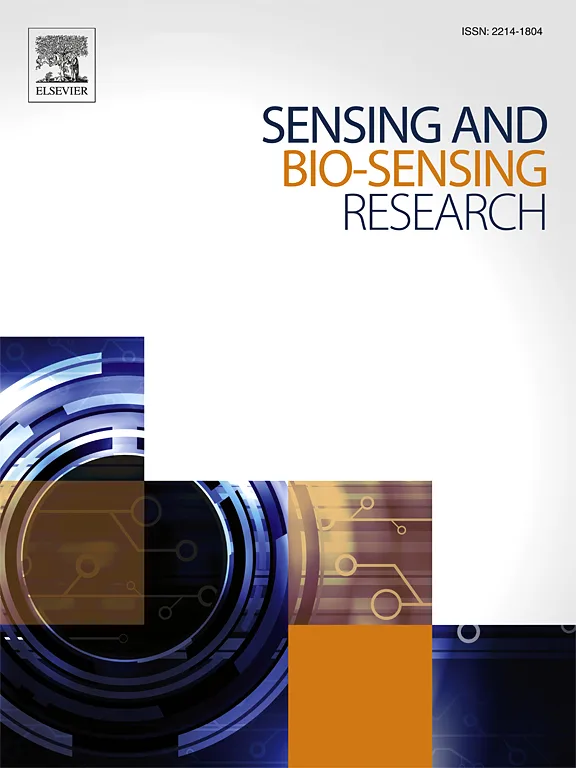
Sensors and Actuators Reports abre em uma nova guia/janela is a peer-reviewed open access journal launched out from the Sensors and Actuators journal family. Sensors and Actuators Reports is dedicated to publishing new and original works in the field of all type of sensors and actuators, including bio-, chemical-, physical-, and nano- sensors and actuators, which demonstrates significant progress beyond the current state of the art. The journal regularly publishes original research papers, reviews, and short communications.
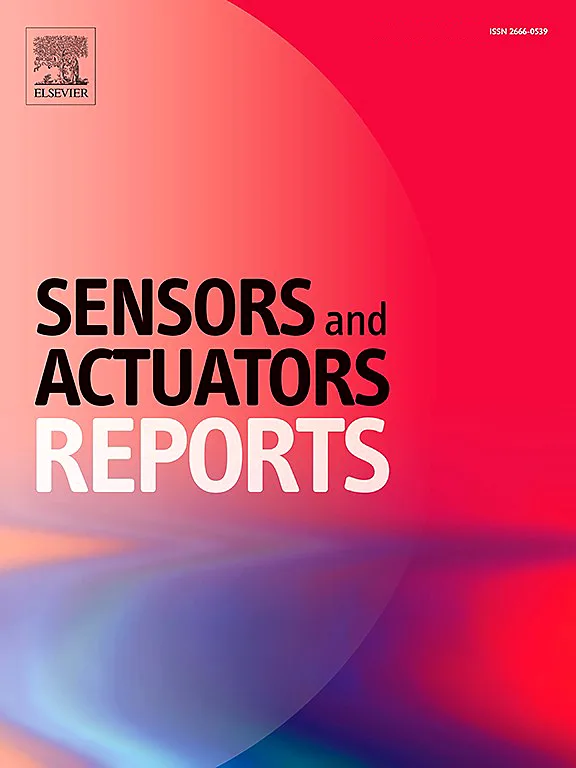
This conference is organized by Elsevier abre em uma nova guia/janela and the following partners:


The 1st International Conference in Bio-Sensing Technology took place in Bristol, UK in 2009. The success of this paved the way for the 2nd International Conference in Bio-Sensing Technology (Amsterdam, The Netherlands 2011). The 3rd one took place in Sitges, Spain in 2013, the 4th in Lisbon, Portugal in 2015 and the 5th in Riva del Garda, Italy, the 6th in 2019 in Kuala Lumpur, Malaysia. The 7th in 2022 in Sitges, Spain.
These conferences are held in the “in between years” of Elsevier’s World Congress on Biosensors that is also held every 2 years.
In 2011 we had more than 350 attendees and this has now grown to almost 400!
View the 7th International Conference in Bio-Sensing Technology oral abre em uma nova guia/janela and poster abre em uma nova guia/janela programs
View the 6th International Conference in Bio-Sensing Technology oral abre em uma nova guia/janela and poster abre em uma nova guia/janela programs
View the 5th International Conference in Bio-Sensing Technology oral abre em uma nova guia/janela and poster abre em uma nova guia/janela programs
After every conference, Elsevier sends out a questionnaire to the attendees. Below are some comments made by delegates of the previous conferences.
“High quality of the oral presentations” “Fantastic opportunities/research across the board.” “Very interesting themes were presented/discussed. Conference makes the bridge between academy and industry.” “Had a really well put together program. I also appreciated the single-session nature of the conference.” “Good range of high quality presenters” “Large and relevant audience” “Quality of research” “Cutting-edge techniques presented” “A good mixture of topics” “Good atmosphere/spirit” “High scientific level on biosensing and nanotechnology-related topics” “It is a great opportunity to keep ourselves up to date with market trends and new developments.” “It's a great opportunity to extend networking” “Quality of the presentations” “Relevance to our research area.” “Top-quality contents but not overcrowded, so it's easier to meet everybody.” “Get all technical experts of this field together.” “Very relevant for my subject, very well organize, good length of the conference.” “Most relevant congress in this research field” “Great organization (both "administration" and lectures)” “It was a very good meeting. It was well attended but not too big that it was difficult to meet people. Most of the oral presentations were of high quality, interesting and relevant. Many young scientists were there presenting their work.” “It was a very useful conference: - well organized - not too large - many of my colleagues were there” “Good quality of lectures” “The relevance of the presentations and posters in our field. Good value for money. Good blend of research groups (more fundamental work) with applied or commercial science (development)” “There are a lot information we can get during the conference including building a network with other researches” “Very interesting conference which contain several scientific topics and new research” “Well organised with a clear agenda and good representatives” “Very interesting for my field” “Good knowledge exchange and interesting poster session” “Very wide audience very new results” “Nice organization and valuable subjects” “There are a lot of interesting sessions and posters and you meet many people” “Well composed program and space for discussions” “People could meet and speak together many times during lunch, poster session, etc..."